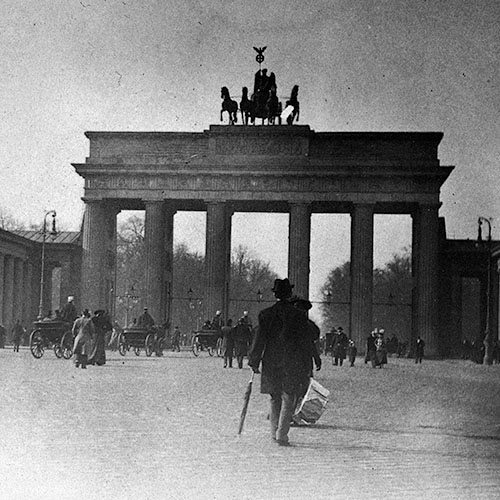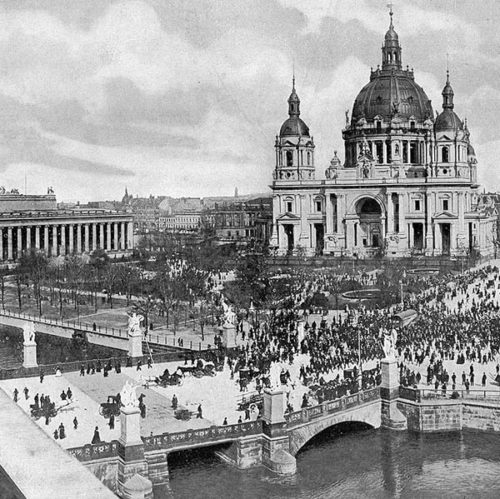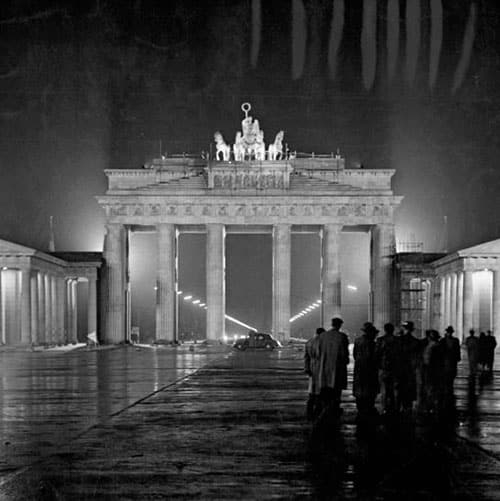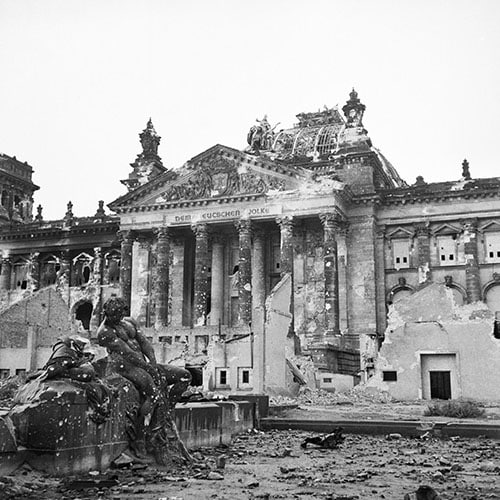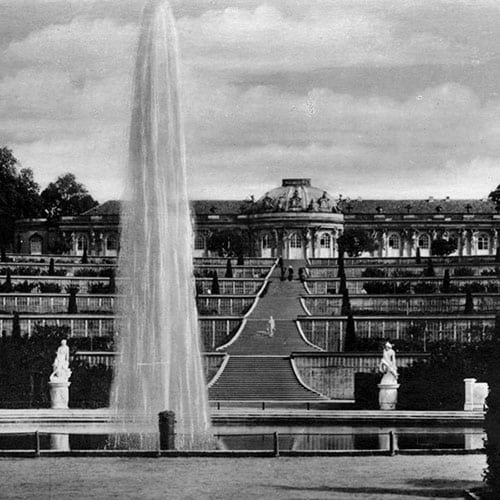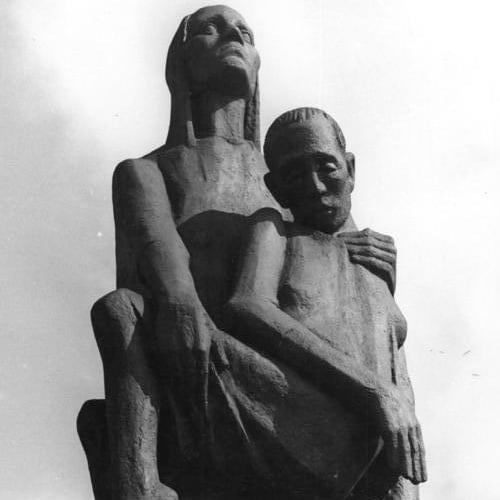“… I am now able to prove that … the 卍, which I find in Émile Burnouf’s Sanscrit lexicon, under the name of “suastika,” and with the meaning εὖ ἐστι, or as the sign of good wishes, were already regarded, thousands of years before Christ, as religious symbols of the very greatest importance among the early progenitors of the Aryan races in Bactria and in the villages of the Oxus, at a time when Germans, Indians, Pelasgians, Celts, Persians, Slavonians and Iranians still formed one nation and spoke one language.”
Heinrich Schliemann, Troy and Its Remains, 1875
The earliest known swastika, a delicate carving on a mammoth-tusk figurine of a bird, dates back an astonishing 15,000 years.
This ancient artifact, unearthed in present-day Ukraine, hints at the symbol’s primordial connection to fertility, life, and the natural world. It wasn’t the isolated whim of a long-vanished artist; similar motifs from the Paleolithic era have been discovered across Europe, suggesting the swastika’s deep roots in the continent’s prehistory.
The word ‘swastika’ itself, however, hails from a much later period and a different corner of the world.

From Hate With Love
“Carry your luck in your pocket. The Swastika is the oldest cross and recognised good luck sign in the world.”
From a 1910s American advertisement for Swastika brand tools
The origin of the term ‘Swastika’ is crystal clear.
It derives from the ancient Sanskrit language, a combination of ‘su’ meaning ‘good’ – and ‘asti’, meaning ‘to be’.
Together, they form ‘svastika’ – a word that translates, quite literally, as ‘well-being’.
In Hinduism, Buddhism, and Jainism, the swastika remains a profoundly sacred symbol to this day, an everyday sight on temple gates, in religious texts, and during sacred ceremonies. In these faiths, it is a multivalent emblem, representing everything from the eternal, cyclical nature of the universe to good fortune and the auspicious footprints of the Buddha.

In Jainism, it is a key element of the faith’s flag, while in Hinduism, the direction of the symbol’s arms carries different meanings.
A clockwise swastika, the svastika, represents the sun and good luck, while its counter-clockwise counterpart, the sauvastika, symbolises night and the tantric aspects of the goddess Kali.
But the swastika was by no means confined to the Indian subcontinent or Ukraine.
It was a remarkably cosmopolitan symbol, popping up in the archeological records of ancient Troy, on Mesopotamian coins, and in the art of the Indus Valley Civilization.

It graced the pottery of early Christian communities and was woven into the textiles of the Coptic Christians of Egypt.
It appeared on the ancient lands of the Caucasus, in Neolithic China, and among various Native American cultures. For the Hopi, it was a symbol of wanderings; for the Navajo, a sacred element in healing rituals.
The swastika’s journey into European consciousness, and its eventual, fateful encounter with German nationalism, was a product of the 19th century’s fascination with archeology and the search for ancient origins. The man who arguably did more than any other to popularize the swastika in the West was the larger-than-life German archaeologist Heinrich Schliemann.

In the 1870s, during his swashbuckling, and often reckless, excavations of what he believed to be the ancient city of Troy, Schliemann uncovered over 1,800 instances of the swastika on pottery shards and other artifacts.
Eager to connect his discoveries to a grand historical narrative, he posited that the symbol was a link between the ancient Trojans, the Greeks, and the early Germanic tribes of his own homeland. He saw it as a powerful religious symbol of his ‘remote ancestors’, a key to unlocking the shared history of a supposedly unified ‘Aryan’ culture that stretched from India to Europe.
Schliemann’s theories, eagerly seized upon by other European thinkers and scholars, set the stage for the swastika’s ideological transformation.
His work, filtered through the lens of a rising tide of nationalism and racial theory, helped to reframe the swastika not as a universal symbol of well-being, but as a specific emblem of ‘Aryan’ heritage.
Schliemann would even have a house built Panepistimiou Street in Athens by 1880, decorated with swastika symbols and motifs including in the ironwork railing and gates, the window bars, the ceiling fresco of the entrance hall, and the entire floor of one room. This still stands – as the Numismatic Museum of Athens.

Heinrich Schliemann’s was a fateful and flawed interpretation, one that ignored the symbol’s truly global and multicultural history.
It also proved to be irresistible to the burgeoning völkisch movements of Germany, which were searching for a potent symbol to represent their romanticised vision of a racially pure and glorious past.
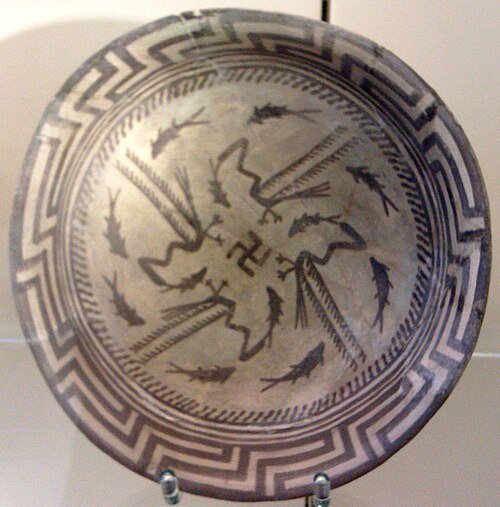
The late 19th and early 20th centuries saw the swastika’s popularity explode across Europe and North America.
It became a ubiquitous good luck charm, appearing on everything from postcards and advertising to the uniforms of the American military and even Coca-Cola products.
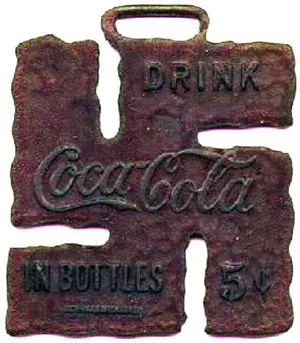
Boy scout troops and girls’ clubs used it, and architects incorporated it into their designs. For a time, it was as benign and commonplace as a four-leaf clover.
But this age of innocence was not to last.
As the swastika became increasingly entwined with German nationalism, its meaning began to curdle. Its ancient, positive connotations were being steadily eroded, and the stage was set for its complete and terrifying appropriation by a new political force that would drag the symbol, and the world, into an abyss of unimaginable horror.
What had once been a symbol of life was about to become a symbol of death.
–

The Nazi Swastika - The Hakenkreuz
“In red we see the social idea of the movement, in white the nationalistic idea, in the swastika the mission of the struggle for the victory of the Aryan man.”
Adolf Hitler describing the Nazi flag
The swastika’s journey from a global symbol of good fortune to an emblem of hate was a gradual process, but it was one that was deliberately and masterfully orchestrated by the Nazi party. The choice of the swastika was no accident; it was a carefully calculated act of political branding, a cynical appropriation of a symbol that was already steeped in a powerful, albeit misunderstood, mythology.
Adolf Hitler, a man who understood the visceral power of imagery and spectacle, saw in the swastika the perfect vehicle to convey the core tenets of his burgeoning movement: racial purity, nationalistic fervor, and an invented link to a glorious, “Aryan” past.
By the early 20th century, the swastika was already a common sight in Germany, having been adopted by various nationalist and völkisch groups.
These groups were drawn to the symbol because of the flawed theories of men like Heinrich Schliemann, who had linked it to a supposed “Aryan master race.”
For them, the swastika was a potent symbol of German superiority, a visible link to a romanticized, racially pure heritage that they believed had been sullied by foreign influences.
Hitler was not the first to use the swastika in this context, but he was the one who would cement its association with a particularly virulent brand of antisemitic nationalism.

In his rambling, hate-filled manifesto, ‘Mein Kampf’, Hitler took personal credit for the design of the Nazi flag, a design he claimed to have perfected after numerous attempts. It was actually introduced to the Nazi Party in August 1919, by a dentist named Friedrich Krohn, the owner of a large private library much used by Hitler.
The Nazi Party flag – described by Hitler as ‘a white disk on a red field, with the swastika in the middle’ – was designed by a Munich goldsmith named Josy Füss, who presented numerous options, with Hitler personally choosing which one pleased him the most.
Both Krohn and Füss would soon leave the Nazi Party – Füss in February 1920, following a disagreement over Hitler’s use of political violence, and Krohn in 1921, in protest against Hitler’s dominance within the movement.
Thus surrendering the legacy of the introduction of the swastika to the Nazi Party and the design of the flag to the later pervasive argument that Hitler himself had been entirely responsible for both.
Perhaps, though, Hitler was recalling a memory from his youth: the Benedictine choir school at Lambach Abbey, Upper Austria, which he attended for several months as a boy, had a swastika chiselled into the monastery portal and also the wall above the spring grotto in the courtyard by 1868.
Their origin was the personal coat of arms of Theoderich Hagn, abbot of the monastery in Lambach, which bore a golden swastika with slanted points on a blue field.

The choice of colors on the Nazi flag was a deliberate evocation of the old German Imperial flag (black, white, and red), a move calculated to appeal to the nationalistic sentiments of those who longed for a return to Germany’s pre-World War I glory.
By embedding the swastika within this familiar color scheme, Hitler was able to visually link his new, radical movement to Germany’s imperial past, giving it a veneer of historical legitimacy.
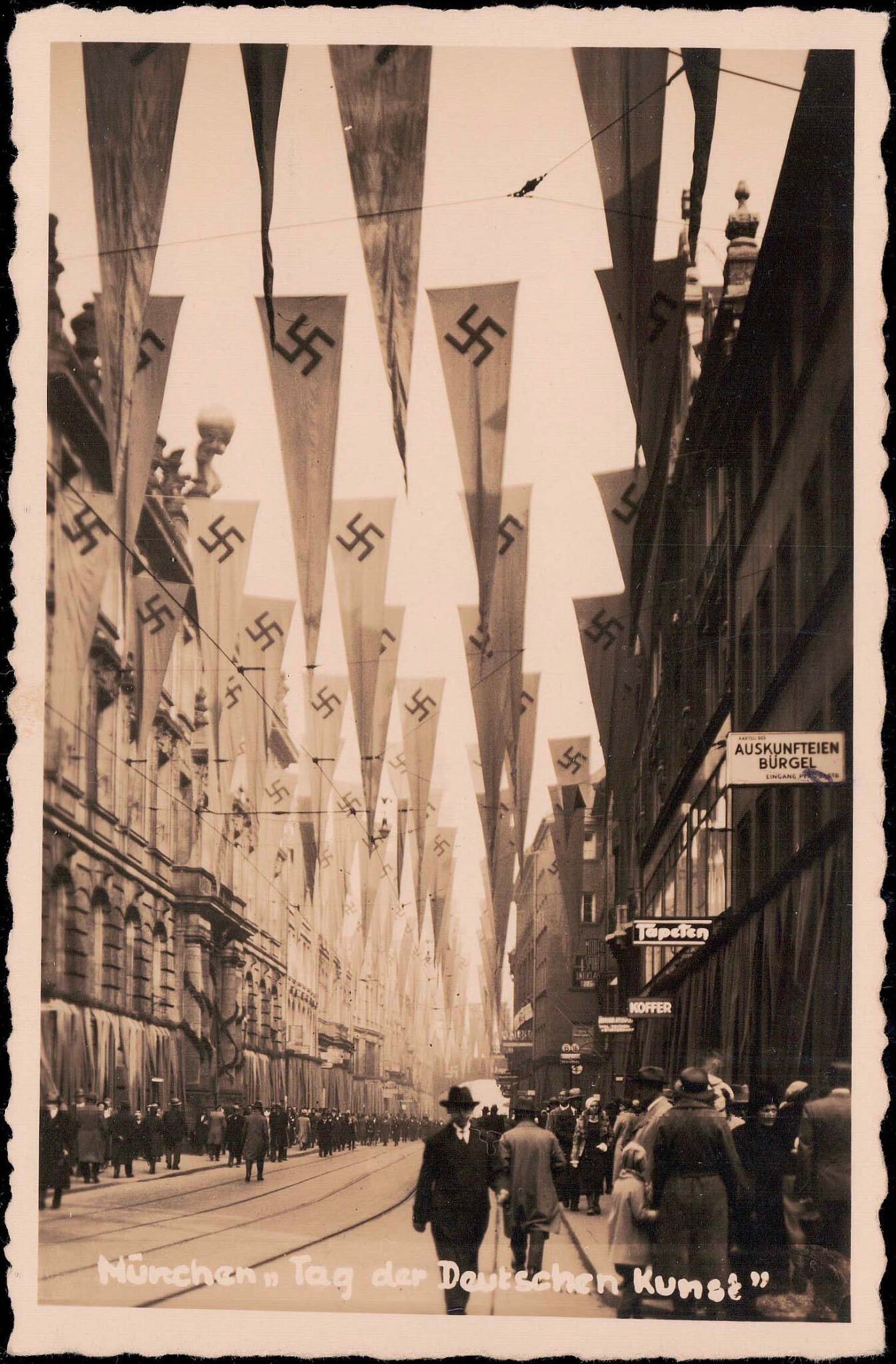
The resulting flag was a masterpiece of propaganda.
Its stark, simple design was easily recognisable and endlessly reproducible. The swastika, a black Hakenkreuz (hooked cross) rotated 45 degrees, was placed in a white circle on a blood-red background. The resulting design was dynamic, aggressive, and impossible to ignore. It was a visual representation of the Nazi worldview: the swastika, representing the “Aryan” race, standing in stark contrast to the white circle of nationalism, all set against a background of red, symbolizing the social ideals of the movement.
By the summer of 1920, this flag was officially adopted as the symbol of the Nazi Party, and it quickly became ubiquitous at party rallies, on posters, and in the party’s ever-growing array of uniforms and insignia.
When the Nazis seized power in 1933, the swastika was elevated from a party emblem to a national symbol.
On March 12th 1933, a decree was issued stating that the old German Imperial flag was to be flown alongside the swastika flag. This was a transitional phase, a way of placating the more traditional elements of German society while slowly but surely cementing the swastika’s place in the national consciousness.
To further enshrine the swastika as a symbol of Nazi power, Joseph Goebbels (Hitler’s minister of propaganda) issued a decree on May 19, 1933, that prevented unauthorized commercial use of the hooked cross.
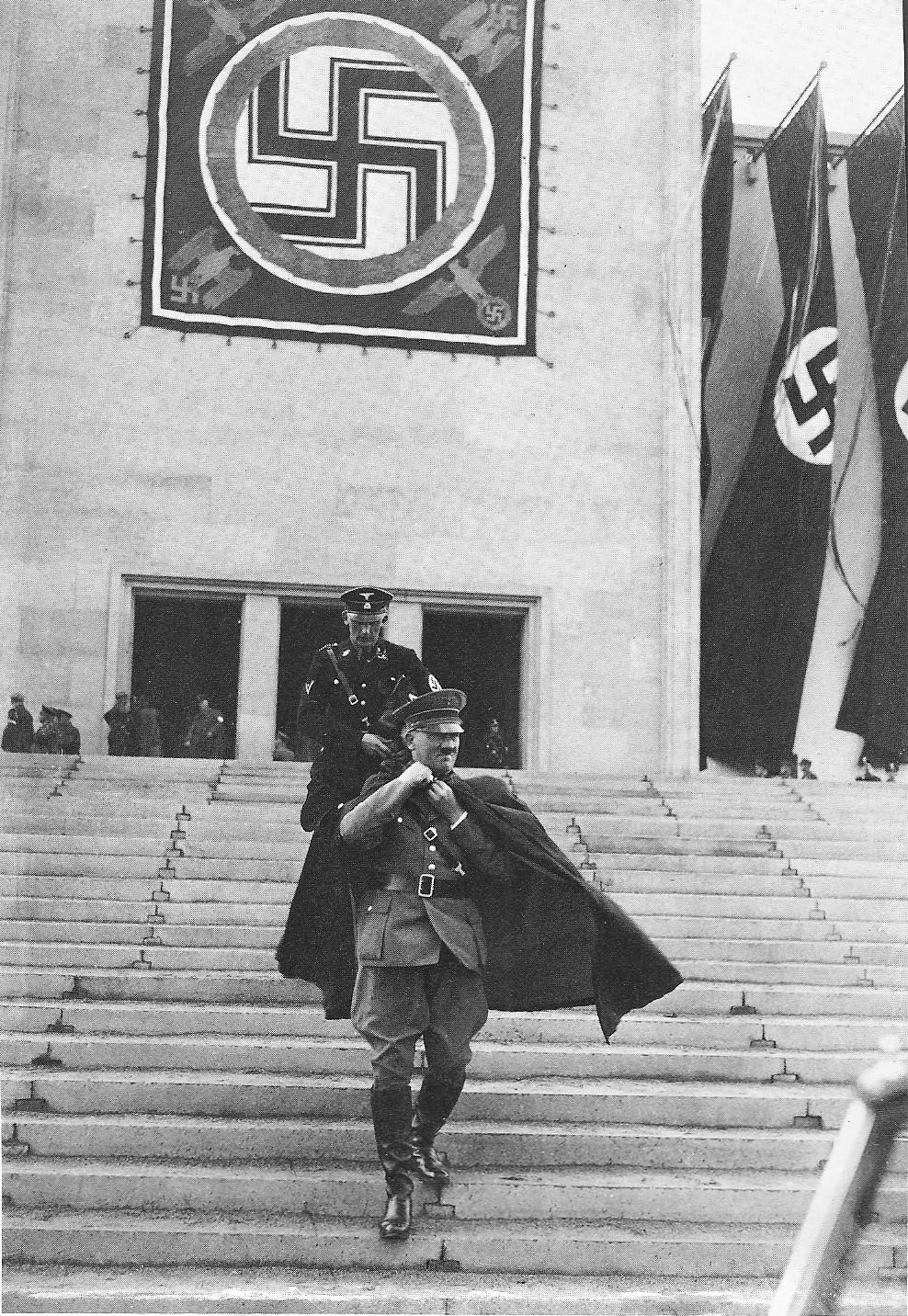
The final step in the swastika’s complete and total appropriation came at the annual Nazi Party rally in Nuremberg in September 1935.
At this carefully choreographed spectacle of nationalist fervor, the infamous Nuremberg Race Laws were passed, stripping Jews of their citizenship and forbidding marriage or sexual relations between them and “citizens of German or kindred blood.”
At this same rally, the Reich Flag Law was passed, declaring the swastika flag to be the one and only national flag of Germany. The ancient symbol of good fortune was now the official emblem of a state that was systematically embedding racism and antisemitism into its very legal fabric.
The Nazis understood that to truly control a nation, you had to control its symbols. The swastika was everywhere, on every public building, on every uniform, on every piece of official stationery. It was a constant, inescapable reminder of the Nazi party’s all-encompassing power. What had once been a sacred sign in Hinduism, a symbol of wanderings for the Hopi, and a good luck charm for countless others was now the chilling trademark of a totalitarian regime.

The swastika’s long, rich, and multicultural history had been violently erased, its meaning twisted into something unrecognizable.
The act of cultural theft was complete.
A symbol of ‘well-being’ had become the ultimate symbol of hate.
–

The Modern Usage Of The Swastika
“The swastika stands for National Socialism and is also a völkisch, Nordic symbol denoting unequivocal opposition to all that is un-German, corrupting, and generally Jewish. But this anti-semitic meaning has been associated with the swastika only since it was adopted by the völkisch leagues as a symbol of their struggle. History does not provide any grounds for the anti-semitic interpretation of this symbol.”
Engelbert Huber, from an article published in ‘Das ist Nationalsozialismus: Organisation und Weltanschauung der NSDAP’ (1933)
The fall of the Third Reich in 1945 did not erase the swastika from the world, but it did forever alter its meaning in the West.
The symbol, once a ubiquitous sign of good fortune, was now inextricably linked to the horrors of the Holocaust and the devastation of the Second World War. Its legacy has been complex and contested ever since, a story of legal battles, cultural misunderstandings, and the enduring question of whether a symbol so thoroughly corrupted can ever be redeemed.

A surprising and often misunderstood chapter in the post-war story of the swastika can be found in the skies over Finland.
The Finnish Air Force used a blue swastika on a white background as its official emblem from its creation in 1918 until 2020. This was not a gesture of Nazi sympathy, but a historical coincidence.
The Swedish Count Eric von Rosen, who gifted the Finnish White Army its first aircraft in 1918, had painted his personal good luck charm—a blue swastika—on the wings of the plane.
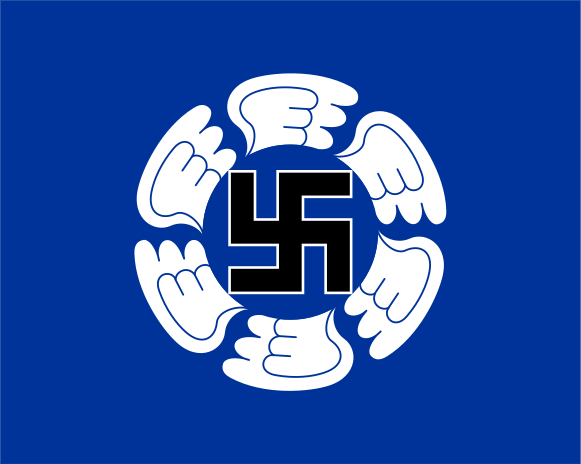
The Finns adopted the symbol, and it predated the Nazi’s use of the swastika by several years.
For decades after the war, the Finnish Air Force continued to use the swastika, albeit in a more limited capacity, a curious anachronism that often baffled outsiders. The decision to finally, and quietly, retire the symbol in 2020 was a tacit acknowledgment of the inescapable power of its Nazi association.
Incidentally, Latvia also adopted the swastika for its Air Force in 1918/1919 and continued its use until the Soviet occupation in 1940.

In Germany, the response to the swastika’s legacy has been far more clear-cut.
In the aftermath of the war, the Allied occupying forces systematically destroyed Nazi iconography, and the newly formed Federal Republic of Germany embedded a prohibition on these symbols into its legal code.
Today, the German Criminal Code, specifically Section 86a, outlaws the “use of symbols of unconstitutional organizations.”
This includes the swastika, the SS runes, and the Nazi salute.
The law is not absolute; exceptions are made for educational, artistic, and scientific purposes, which is why the swastika can be seen in historical films and museum exhibits. But its use as a symbol of political propaganda is strictly forbidden, with punishments ranging from fines to imprisonment.
Interestingly, the ban specifically targets the Nazi Hakenkreuz. The traditional, upright swastika, when used in a clear religious context by Hindu, Buddhist, or Jain communities, is not illegal.
This is a nuanced but crucial distinction, a legal recognition of the symbol’s multifaceted history.
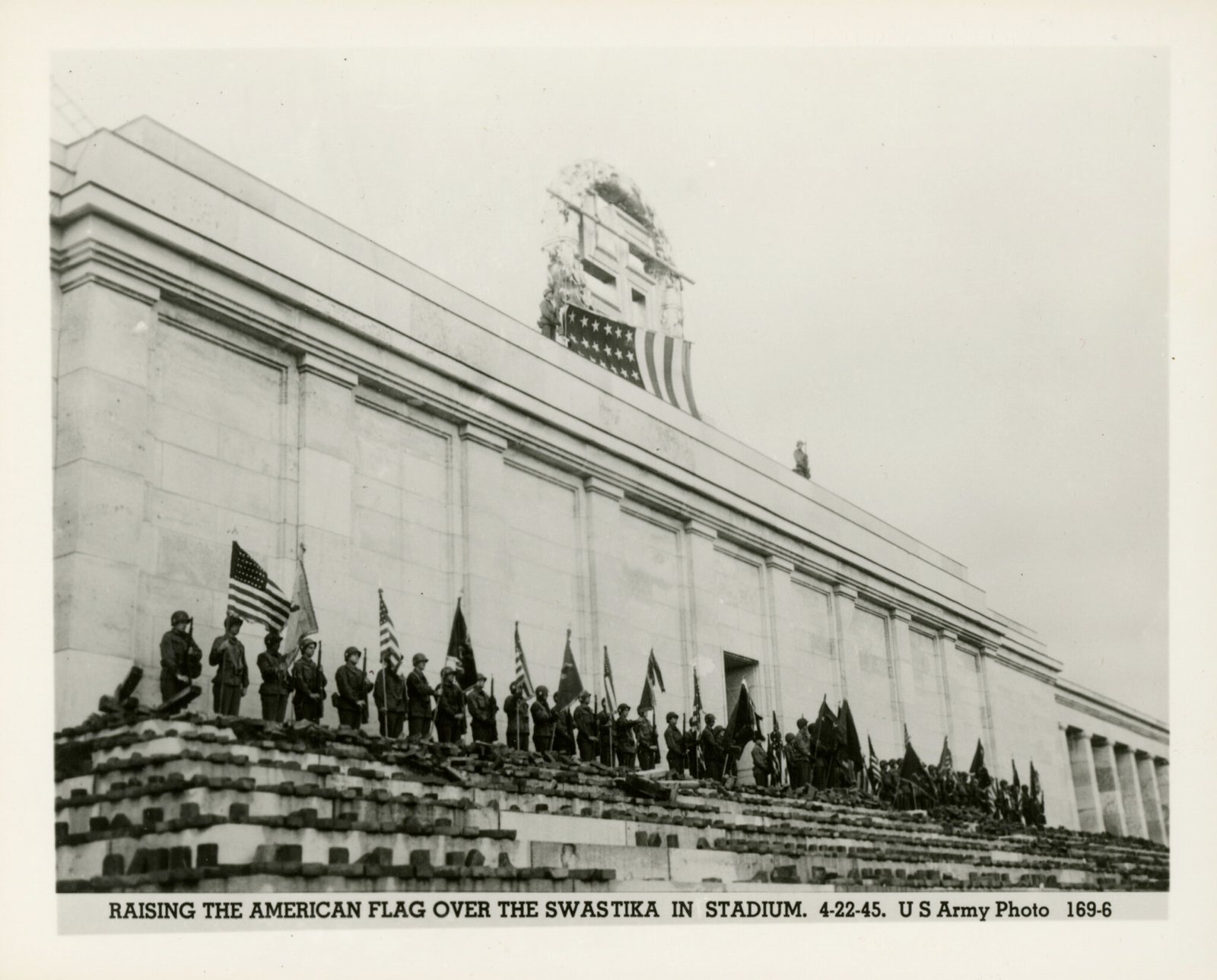
The legal landscape in other countries is quite different.
In the United States, for example, the display of the swastika, however hateful, is generally protected under the First Amendment’s guarantee of free speech.
This has led to numerous legal battles and public controversies, as the right to free expression often clashes with the desire to protect communities from symbols of hate.
The United Kingdom also has a more permissive approach, though the display of the swastika can be prosecuted under laws prohibiting the incitement of racial hatred. This difference in legal frameworks highlights a fundamental philosophical divergence: while Germany has prioritized the protection of its democracy from the symbols of its darkest chapter, the United States has placed a higher value on the principle of free speech, even when that speech is deeply offensive.

Can the swastika ever be ‘saved’ from its Nazi past?
In the West, the answer is almost certainly no. The symbol is too deeply intertwined with the trauma of the 20th century, its image too seared into the collective consciousness as a representation of genocide and totalitarianism.
Its use by neo-Nazi and white supremacist groups has only reinforced this association, turning it into a permanent emblem of hate.
For Hindus, Buddhists, and Jains, who continue to use the swastika as a sacred symbol, this is a source of ongoing pain and frustration.
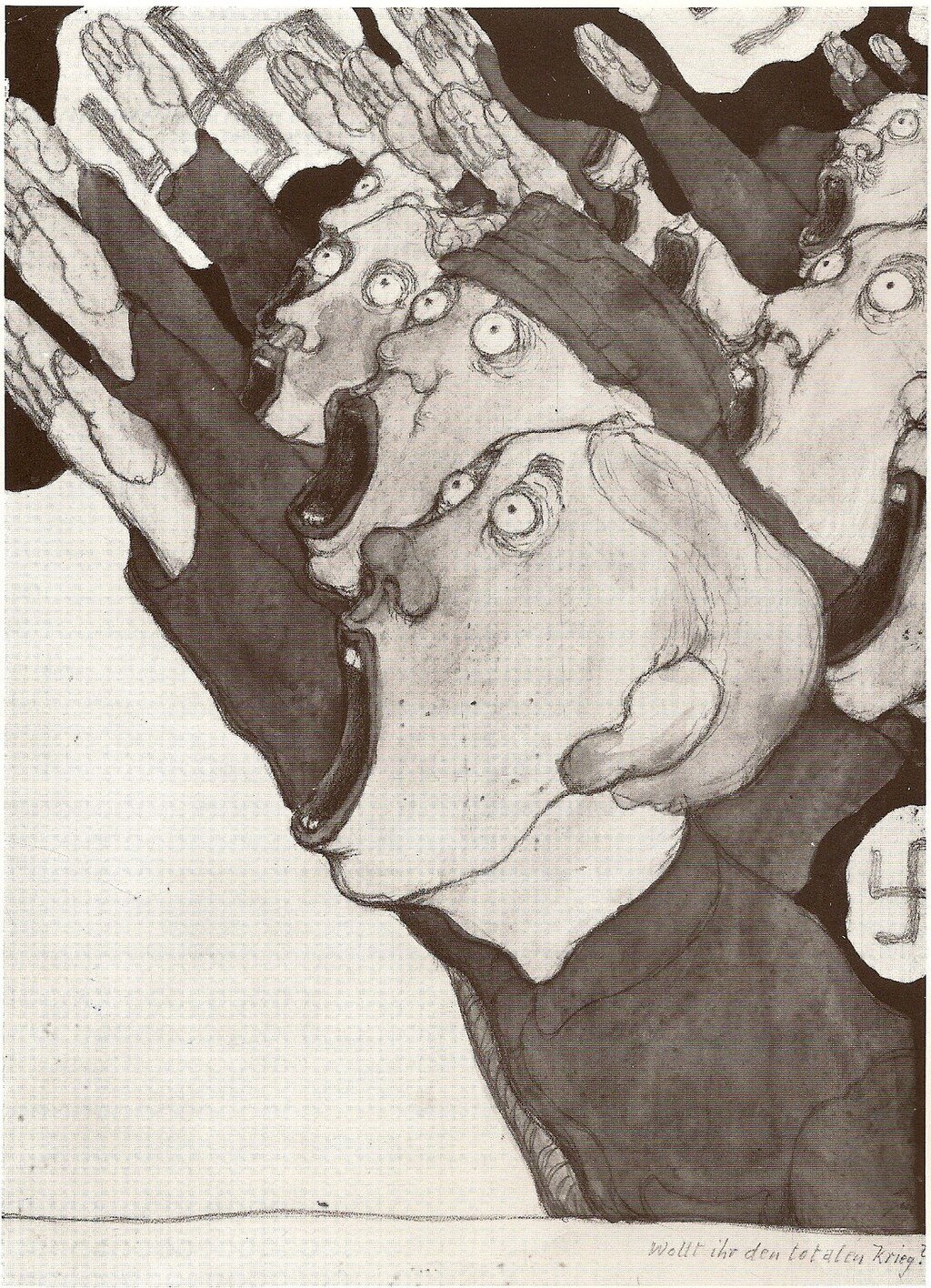
The swastika is not the only symbol to have been irreversibly tarnished.
The so-called Roman salute is now inextricably linked to fascism.
The burning cross, with its roots in Scottish clan rituals, has been transformed into a terrifying symbol of racial terror by the Ku Klux Klan.
In Germany, other symbols are also forbidden, including the Sig rune of the SS, the Wolfsangel rune used by some Nazi units, and the Celtic cross, which has been co-opted by neo-Nazi groups.
These prohibitions are a reminder of a nation’s ongoing struggle to reckon with the ghosts of its past.
Symbols do not have inherent, immutable meanings. They are what we make them.
And for the swastika, the stain of its Nazi incarnation remains, for now, indelible.
–
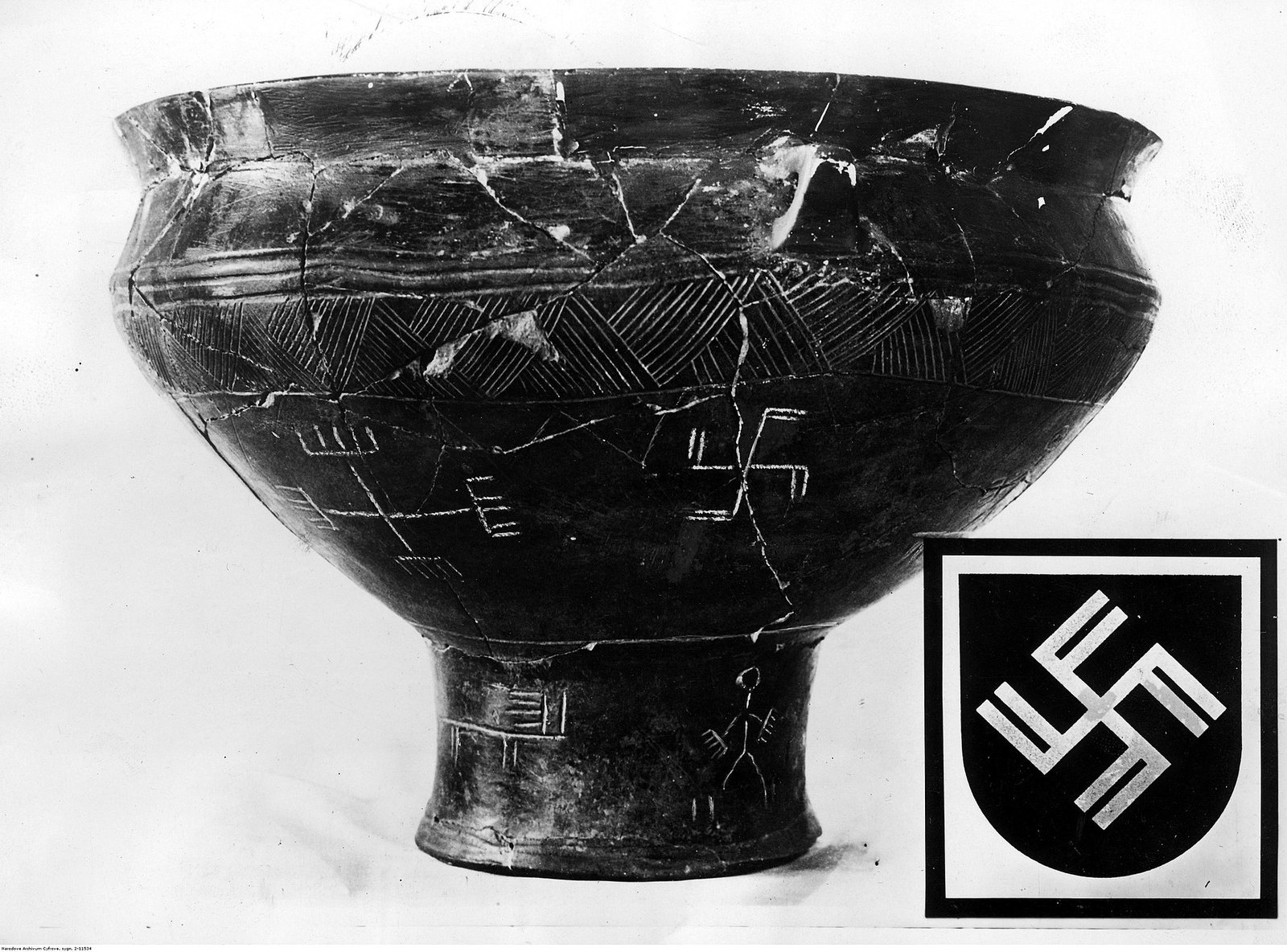
Conclusion
“Absolutist systems…represent all the events of history as depending upon the great first causes linked by the chain of fatality, and which, as it were, suppress men from the history of the human race.”
Alexis de Tocqueville, French diplomat, political philosopher, and historian (1856)
The Swastika’s origins are ancient and diverse, evidence of a shared human impulse to create symbols of hope, prosperity, and the cyclical nature of life.
For millennia, the hooked cross was a benign, even sacred, presence in cultures across the globe, from the Indian subcontinent to the Americas.
Its Sanskrit name, svastika, literally means ‘well-being’, a poignant and tragic irony given its 20th-century legacy. The swastika was a truly global symbol, belonging to no single culture, but to all of humanity.
The Nazis’ meticulous and all-encompassing use of the swastika, embedding it into every facet of German life, ensured that it would be forever associated with their reign of terror.
What was once in many places seen as a symbol of life became an emblem of death, its original meaning brutally erased.
***
If you’ve enjoyed reading this article, consider booking one of our private guided tours of Berlin.
Bibliography
Agner, Dennis. “A Brief History of the Swastika Symbol and Its Use in Navajo Weaving.”
Duffy, Peter. The Agitator.
Evans, Richard J. (2003). The Coming of the Third Reich. Penguin Books.
Heller, Steven. (2000). The Swastika: Symbol Beyond Redemption? Allworth Press.
Heller, Steven. (2011). Iron Fists: Branding the 20th Century Totalitarian State. Paperback edition, April 20.
Nakagaki, T.K. The Buddhist Swastika and Hitler’s Cross: Rescuing a Symbol of Peace from the Forces of Hate.
Quinn, Malcolm. (2005). The Swastika: Constructing the Symbol. Routledge.
Shirer, William L. (1960). The Rise and Fall of the Third Reich: A History of Nazi Germany. Simon & Schuster.
Toland, John. (1976). Adolf Hitler: The Definitive Biography. Doubleday.
HISTORICAL ARTICLES
Mythbusting Berlin

Are There Any Nazi Statues Left In Berlin? – Mythbusting Berlin
Visitors to Berlin often arrive expecting to find the physical remnants of the tyranny of the 20th century still standing – statues of dictators, triumphal arches, or bronze idols. Instead, they often find none. The stone symbols and statues of the Third Reich are still gazing down on them, however, hiding in plain sight. But why are there no statues of Hitler? Did the Allies destroy them all in 1945, or is the truth stranger
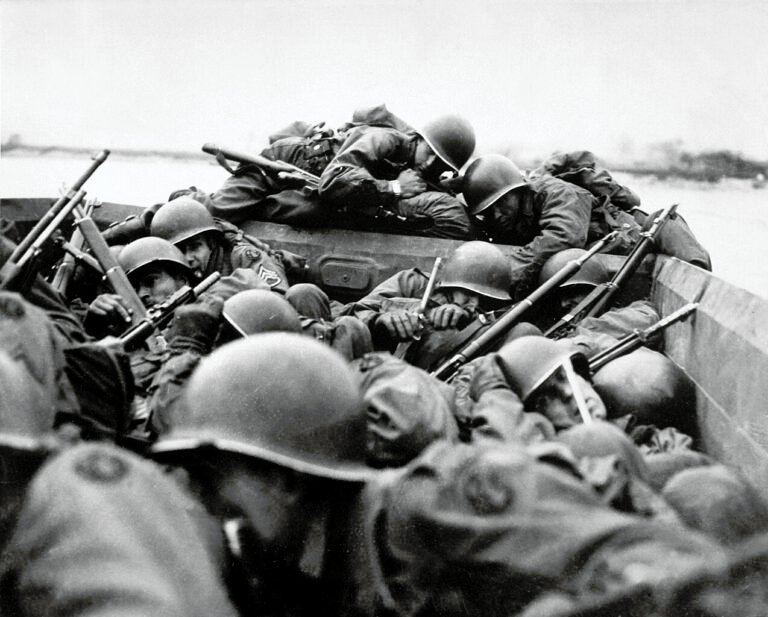
Could The Western Allies Have Captured Berlin? – Mythbusting Berlin
To contemplate a Western Allied capture of Berlin in 1945 is to challenge the established endgame of the Second World War. What was the true military and logistical feasibility of a Western Allied assault on the Nazi capital? What factors truly sealed Berlin’s fate, and what might have changed had the Allies pushed eastward?
Answering these questions means delving into the complex interplay of logistics, political maneuvering, and the competing visions for a post-war world
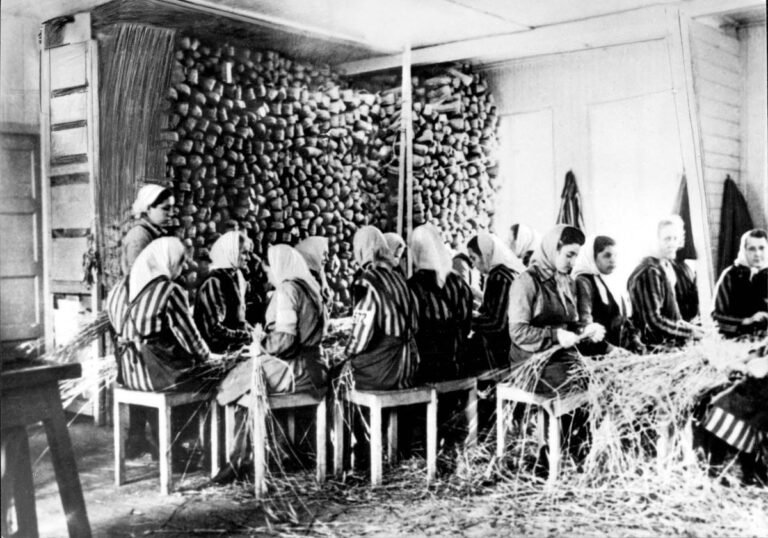
Did Any Of The Rothschild Dynasty Die In The Holocaust? – Mythbusting Berlin
The Rothschild name is synonymous with immense wealth, influence, and persistent conspiracy theories—especially during the era of Nazi Germany. Often targeted by antisemitic propaganda, the family’s survival during World War II has sparked myths about their supposed immunity from Nazi persecution. But did any Rothschild family member actually perish in the Holocaust? This article explores that compelling question, unraveling historical misconceptions and revealing the reality behind one of Europe’s most famous dynasties.
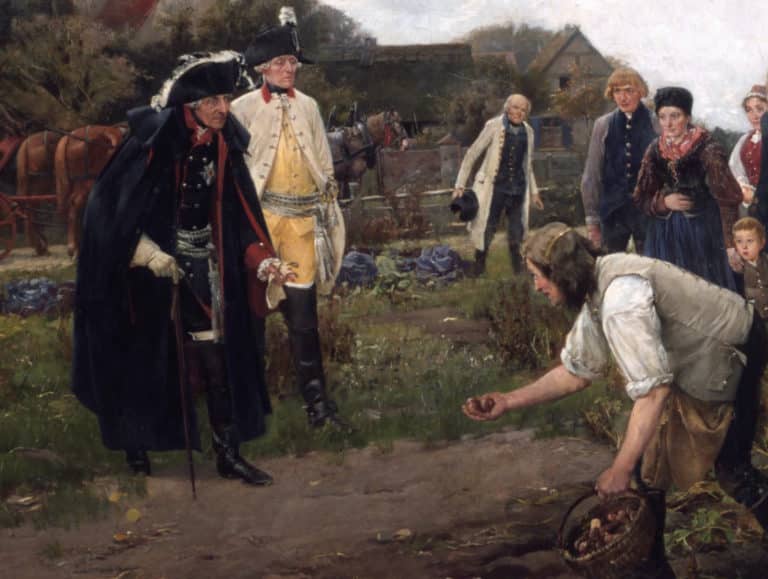
Did Frederick The Great Introduce The Potato To Germany? – Mythbusting Berlin
One of the more bizarre claims to fame attributed to the first King of Prussia is that the man who would go down in history known as Frederick the Great introduced the potato to Germany during his reign back in the 1700s. This starchy root vegetable has undoubtedly become a staple part of German cuisine – an essential addition to any plate of Schnitzel, Schweinshaxn, and Königsberger Klopse – however, whether Frederick the Great is
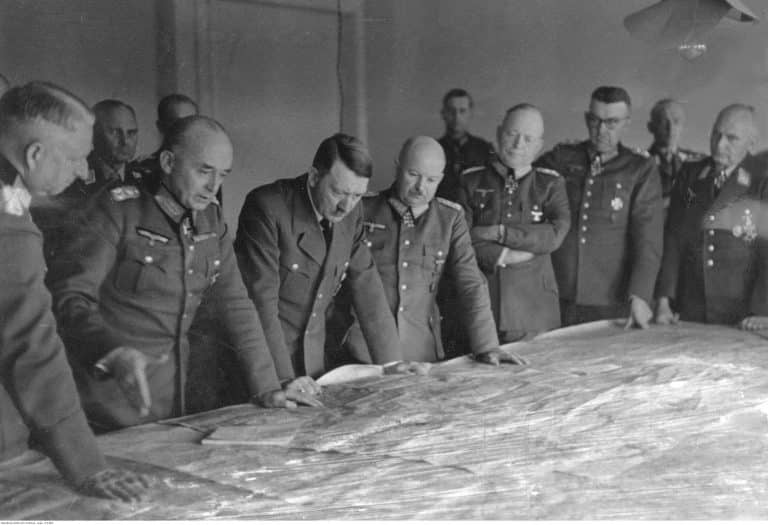
Did Hitler Escape To Argentina In 1945? – Mythbusting Berlin
Although Nazi leader, Adolf Hitler, certainly remains an inescapable figure, could there be any truth to the story of his escape to Argentina in 1945? That the most wanted man on earth could simply vanish, to spend the rest of his life peacefully in South American obscurity captivates imaginations. Yet, despite numerous investigations, this tale persists primarily as myth—fueled by speculation, hearsay, and conspiracy theories.
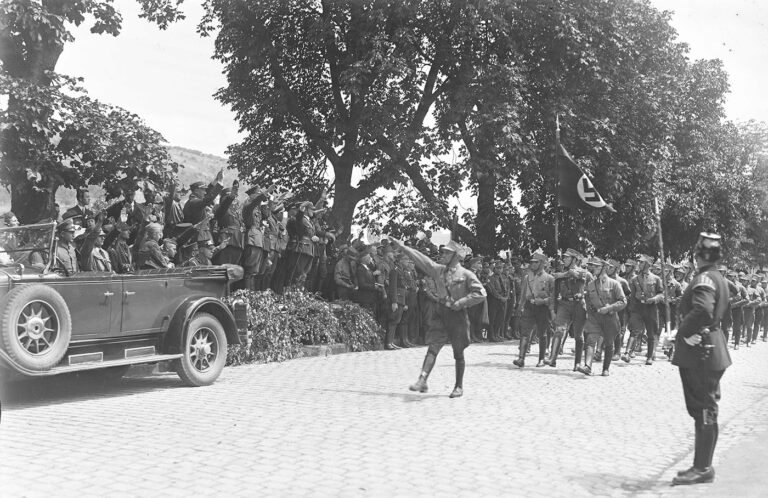
Did Hugo Boss Design The Nazi Uniforms? – Mythbusting Berlin
The idea that Hugo Boss – the man whose name now adorns expensive suits and fragrances – was the creative genius behind the Nazi uniforms suggests a terrifying collision of haute couture and holocaust – a marriage of high style and high crimes. The image is striking: a German tailor sketching the ultimate villain’s costume. But history, as usual, is far messier, more bureaucratic, and more banal than the internet memes suggest. To understand who
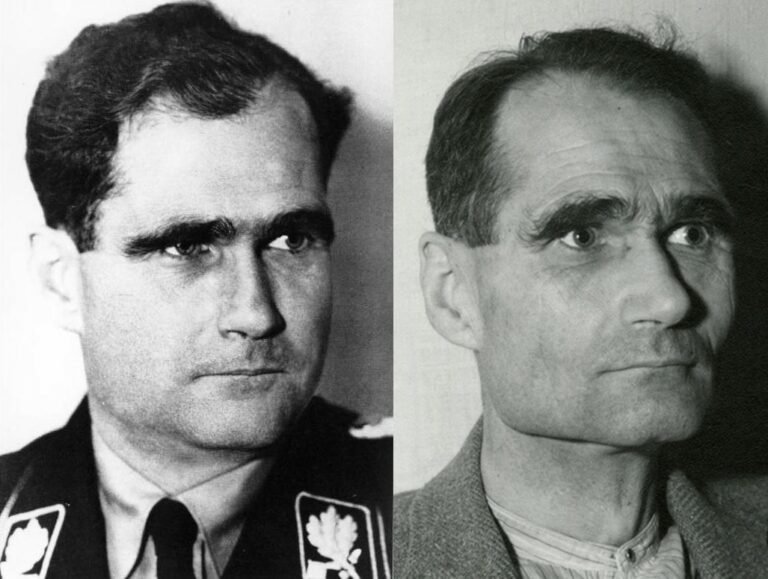
Did Rudolf Hess Really Commit Suicide? – Mythbusting Berlin
On a summer’s day in 1987, the last Nazi war criminal of the Nuremberg trials was found dead in a prison built for hundreds, yet for two decades, housed only him. The official verdict was suicide, a straightforward end to a life defined by fanaticism, delusion, and contradiction.
But the simplicity of the report belied the complexity of the man and the 46 years he had spent in Allied custody. In the meticulously controlled

Did The Nazis Develop Nuclear Weapons? – Mythbusting Berlin
The Nazi obsession with super-weapons became so serious in the closing stages of the Second World that Adolf Hitler personally believed that such ‘Wunderwaffen’ both existed in a usable form – and would save the country from defeat. Had the Nazis managed to develop nuclear weapons by 1945 – the outcome of the war would surely have been different. But how close were Hitler, Himmler, and his henchmen to developing an A-bomb?

Did The Nazis Invent Decaf Coffee? – Mythbusting Berlin
Persistent rumors claim that Nazis preferred their coffee anything but pure, leading some to wonder if they might have influenced the development of decaffeinated coffee. Although decaf was already widely available across Europe by the mid-20th century, speculation continues: could the Nazis really have played a role in popularizing—or even discovering—this caffeine-free alternative, or is this simply another caffeinated conspiracy cooked up to sensationalize an ordinary historical detail?

Did The Nazis Invent The Bicycle Reflector? – Mythbusting Berlin
The fruits of wartime ingenuity are plenty – so many, in-fact, that it has become somewhat of a worn cliche that as the guns start firing the innovators get to work, often solving problems while providing more problems for the enemy to overcome.The kind of progress that results in the production of newer improved, more lethal weapons, such as to increase the chances of victory.
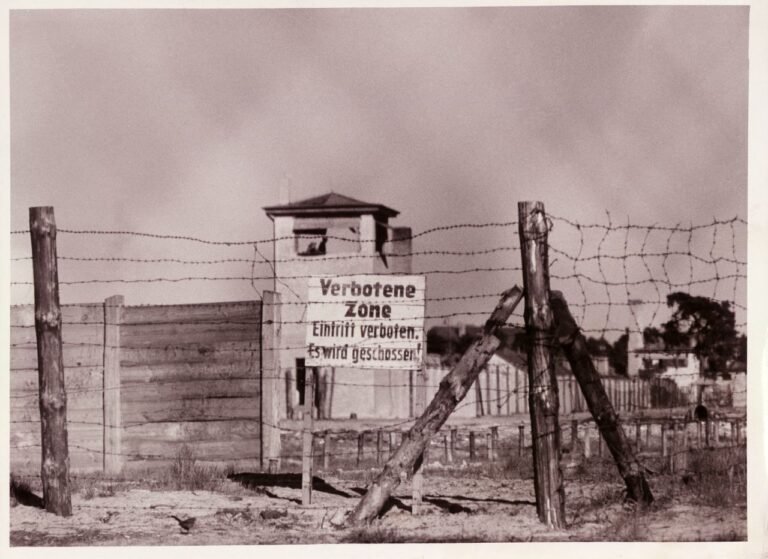
Did The Nazis Run The Largest Counterfeiting Operation In History? – Mythbusting Berlin
During the Second World War the Nazis masterminded an astonishing plot to destabilise Britain by flooding its economy with counterfeit banknotes. Crafted in secret by concentration camp prisoners, this forged fortune became the most ambitious counterfeiting operation ever attempted. But was it history’s largest? Dive into the extraordinary tale of Operation Bernhard,
rife with deception, survival, and intrigue—revealing the truth behind one of the Third Reich’s most audacious schemes and its surprising legacy.
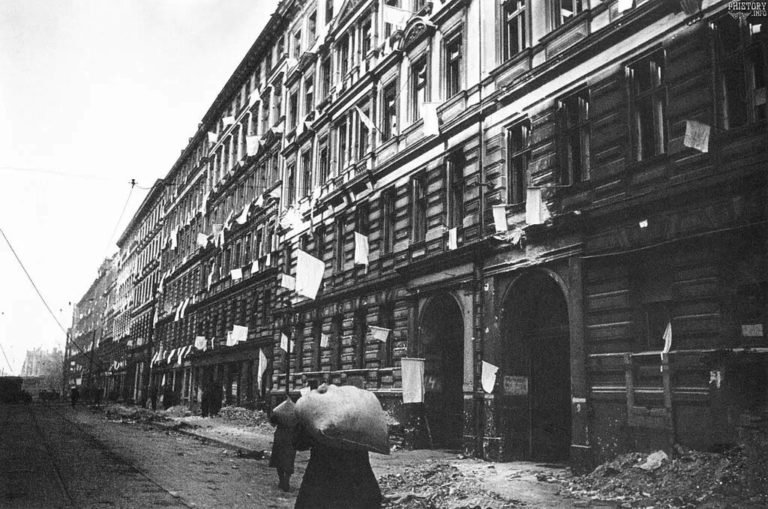
Did The Second World War End In Berlin? – Mythbusting Berlin
When is a war ever truly over? When the last shot is fired in anger would seem like the best measure. Rarely, though, is it possible to gain insight into such a moment.
Remarkably, a record still exists of such a moment at the end of the First World War on the Western Front. A seismic register and recording of the last belching battery of British guns firing artillery across no-man’s-land, followed by a profound

Did The Spanish Flu Pandemic Help The Nazis Take Power? – Mythbusting Berlin
The devastating Spanish Flu pandemic of 1918-1919 struck amid Germany’s post-war turmoil, compounding social instability, economic hardship, and widespread political disillusionment. Could this catastrophic health crisis have indirectly paved the way for Nazi ascension? While often overshadowed by war and revolution, the pandemic’s profound psychological and societal impacts arguably contributed to the perfect storm, enabling extremist ideologies—including Nazism—to gain popularity and ultimately seize power in a fractured Germany.
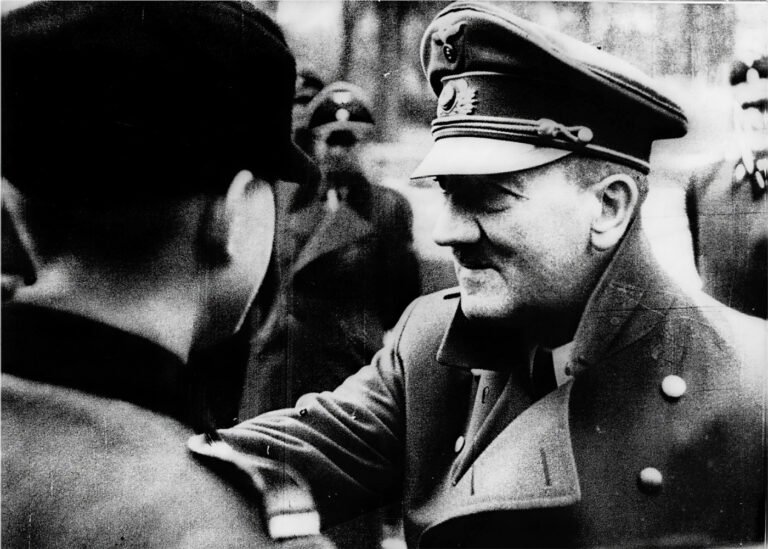
Have Adolf Hitler’s Remains Been DNA Tested? – Mythbusting Berlin
In the smouldering ruins of Berlin in 1945, the world’s most wanted man vanished. Did Adolf Hitler, as official history attests, die by his own hand in the Führerbunker? Or did he escape, fuelling a thousand conspiracy theories that have echoed for decades? For years, the Soviets claimed to hold the gruesome proof of his death: a skull fragment and a set of teeth, locked away in Moscow archives. But in an age of definitive
How Did The Nazi Concentration Camps Differ From The Soviet GULAG?
The Nazi concentration camps and Soviet Gulag system have often been conflated in popular imagination—twin symbols of twentieth-century totalitarian horror. Yet the two systems operated on fundamentally different principles. One extracted labor to fuel industrialisation while accepting mass death as collateral damage; the other evolved into purpose-built machinery of genocide. Understanding these distinctions isn’t merely academic—it reveals how different ideologies produce different atrocities, and why Germany and Russia reckon with these legacies so differently today.

How Long Did It Take To Build The Berlin Wall? – Mythbusting Berlin
It is one of the most enduring images of the 20th century: a city divided overnight. The popular narrative tells us that Berliners went to sleep in a unified city and woke up in a prison. While the shock of August 13th 1961, was very real, the idea that the ‘Wall’ appeared instantly is a historical illusion. The physical scar that bisected Berlin was not a static creation, but a living, malevolent beast that evolved

How Many Assassination Attempts On Adolf Hitler Were There? – Mythbusting Berlin
Nazi leader, Adolf Hitler, projected an aura of invincibility, a man of destiny shielded by providence. But behind the carefully constructed image of the untouchable Führer lies a story of constant threat, of bombs that failed to detonate, and errant bullets that missed their mark. Unearth the hidden history of the numerous attempts on Hitler’s life as we explore the courage of those who tried to change the course of history and the devil’s luck
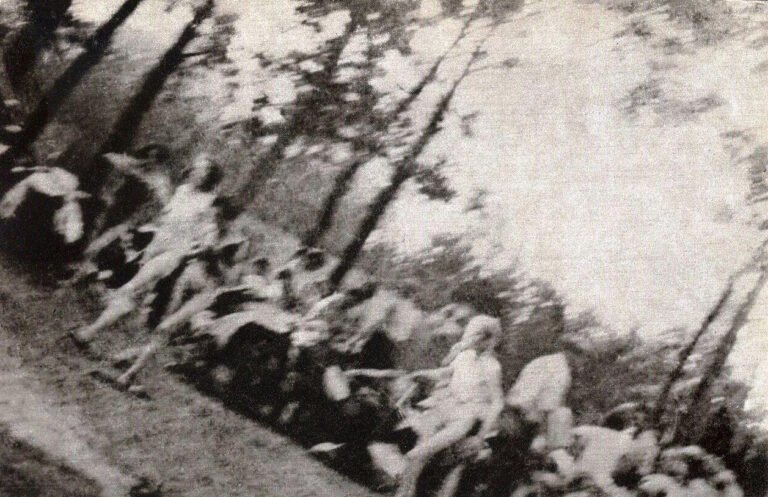
How Many Jews Died In The Holocaust? – Mythbusting Berlin
The answer to the question posed of how many Jews died in the Holocaust is a simple one: too many. That merely one death was an unforgivable obscenity is a fundamental and necessary realisation in understanding the capriciousness of this unparalleled racial genocide. To comprehend, however, the full number of Jews murdered in Europe by the Nazi regime in the 1930s and 1940s is a detective story of epic proportions: the evidence overwhelming, multifaceted, and

How Many People Died Trying To Escape East Germany? – Mythbusting Berlin
The image of the Berlin Wall is seared into our collective memory, a concrete symbol of Cold War oppression. We think of the daring escapes and the tragic deaths of those who failed. But that well-known number is only a fraction of the truth. The story of those who died trying to escape East Germany is far broader and more complex than most imagine, stretching along a thousand-kilometer border and out into the cold waters
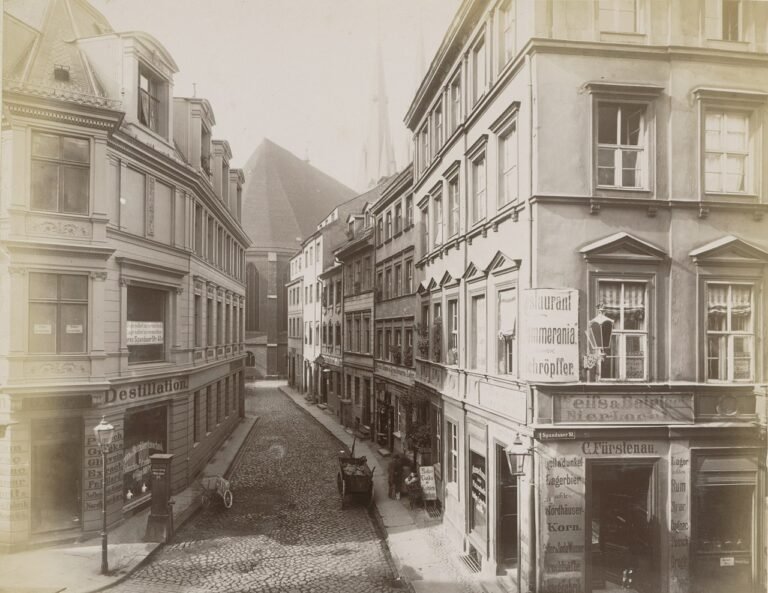
How Old Is Berlin? – Mythbusting Berlin
A relatively new arrival in Europe, Berlin is over 1000 years younger than London, nevermind Rome or Athens, Jerusalem or Jericho. Just how old is Berlin though?
A question fraught with false assumptions and distortions – that has more often than not been answered with propaganda as it has with the cold hard truth.









